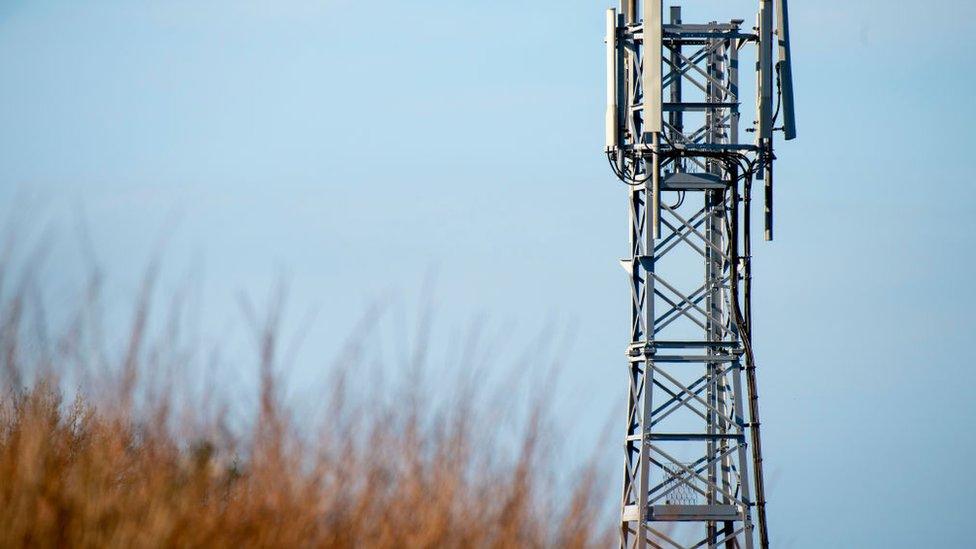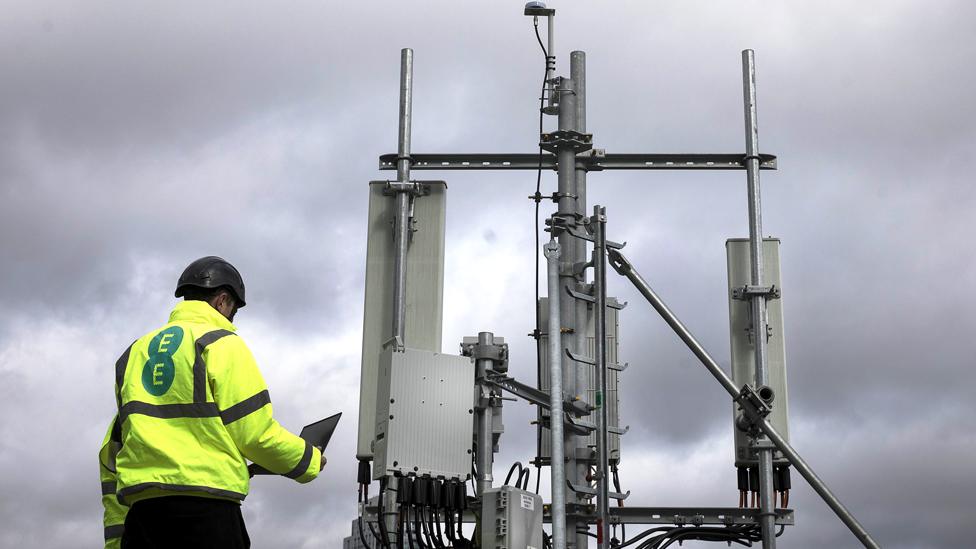5G: Rural areas to be allowed taller and wider masts
- Published

The government is to allow taller and wider mobile phone masts to be built across the English countryside to speed up the 5G network rollout.
Parliament will vote on the plans, which the government says would improve rural coverage, while “minimising any visual impact” on the landscape.
Masts on public land have been limited to 20m (66ft) tall, but new masts can be up to 30m, and existing ones 25m.
Mobile firms will need permission from local councils to build new masts.
Stricter rules will apply in protected areas, including national parks, conservation areas and areas of outstanding natural beauty.
Some people are opposed to mobile phone masts because of their appearance.
Last month, one resident of the village of Scholes in West Yorkshire branded its two new 20m 5G masts an "absolute eyesore". Local councillor Kath Pinnock said the fact that planning permission had not been required for them amounted to an attack on democratic rights.
The government launched a consultation on the plans in 2019. Former culture secretary Nicky Morgan said at the time that there had to be "a balance struck" between landscape and connectivity.
5G
5G uses higher frequency waves so more devices can be connected to it, and have faster internet speeds.
However, they require more transmitter masts to enable the technology.
Mobile firms will be “incentivised” to focus on improving existing masts rather than building new ones, the Department for Digital, Culture, Media and Sport said.
“We want to level up the country and end the plague of patchy and poor mobile signals in rural communities,” said Culture Secretary Oliver Dowden.
“These practical changes strike a careful balance between removing unnecessary barriers holding back better coverage, while making sure we protect our precious landscape.”
Taller masts across the rest of Britain can be fast-tracked through planning
New or improved masts will help deliver the government’s £1bn Shared Rural Network plans.
The government has committed to extending 4G coverage to 95% of the UK - regardless of which network customers use - by 2025.
Leading mobile operators EE, O2, Three and Vodafone will share network equipment and build new masts as part of the scheme.
Mobile UK, which represents the four networks, welcomed the proposals and said the legislative changes should be brought “as quickly as possible” to ensure “ambitious targets” were met.
The proposals include:
Existing mobile masts to be strengthened without prior approval, so that they can be upgraded for 5G
In unprotected areas, mast increases can be up to a maximum of 25m (previously 20m)
Greater height increases will also be permitted, subject to approval by the local authority
New masts can be built up to five metres higher - a maximum of 30m in unprotected areas and 25m in protected areas, subject to approval by the planning authority
'Digital divide'
The changes are long overdue and will help to address a "worrying digital divide" in rural communities, CCS Insight analyst Kester Mann said.
"Dated planning laws have hindered mobile network deployment for years," he added. "Taller masts enable signals to travel further, providing coverage to residents and visitors over a wider area.
"But it is vital to strike the right balance between improving connectivity and preserving the beauty of the countryside."
Quality of life
Paul Lee, global head of research at Deloitte, said: "Since the pandemic started, voice calls have been upgraded to video calls; 2G is fine for the former but cannot support the higher bandwidth video conference call, but 4G can.
"4G in rural areas would enable not just consumers to be more connected, but for its residents to have more options to work from rural locations, offering most likely a better quality of life.
"Essential services such as healthcare could also be delivered over a 4G network more readily than a 2G one."
- Published27 August 2019

- Published30 May 2019

- Published11 March 2021
